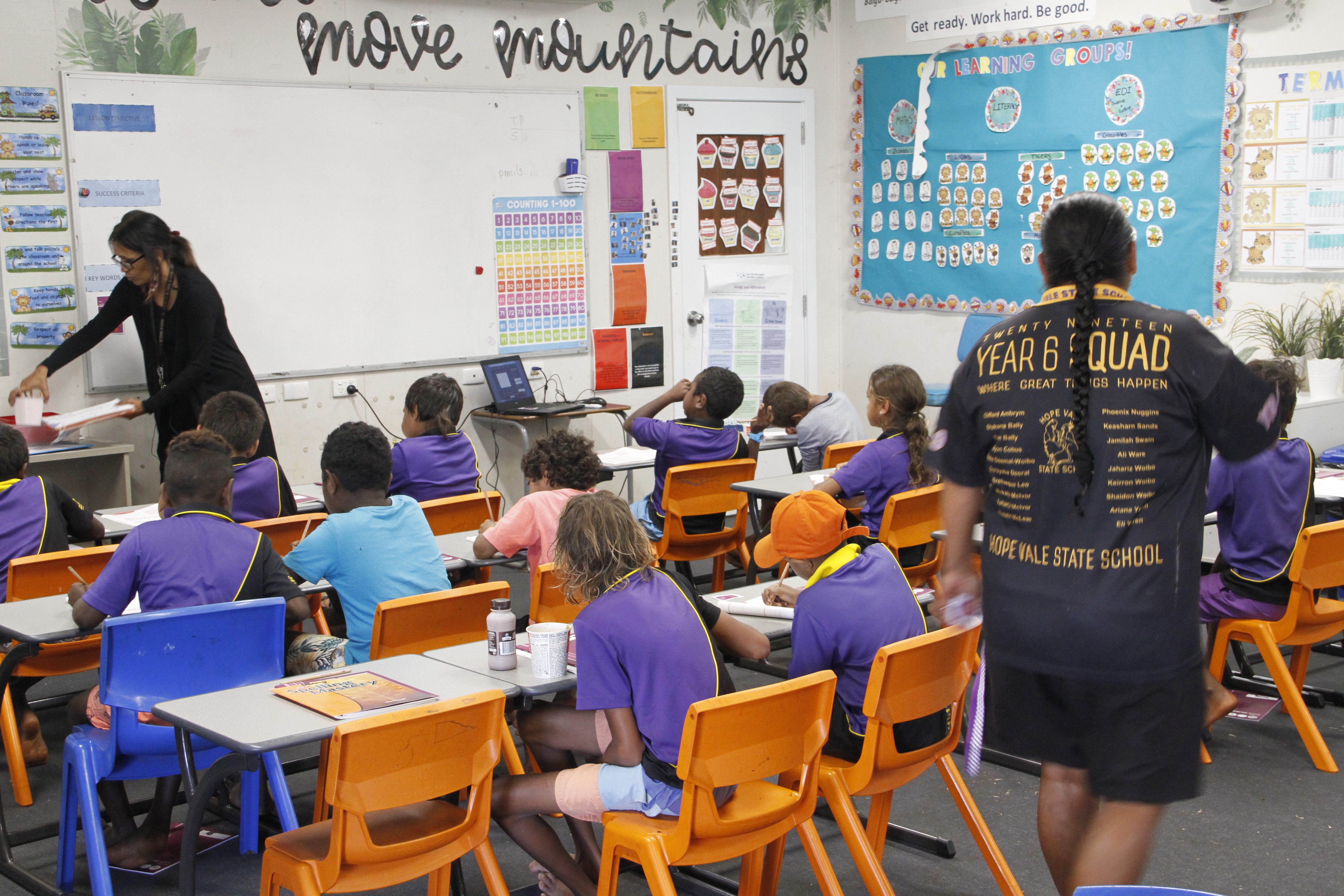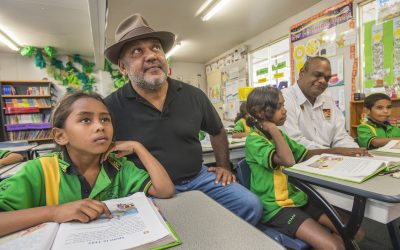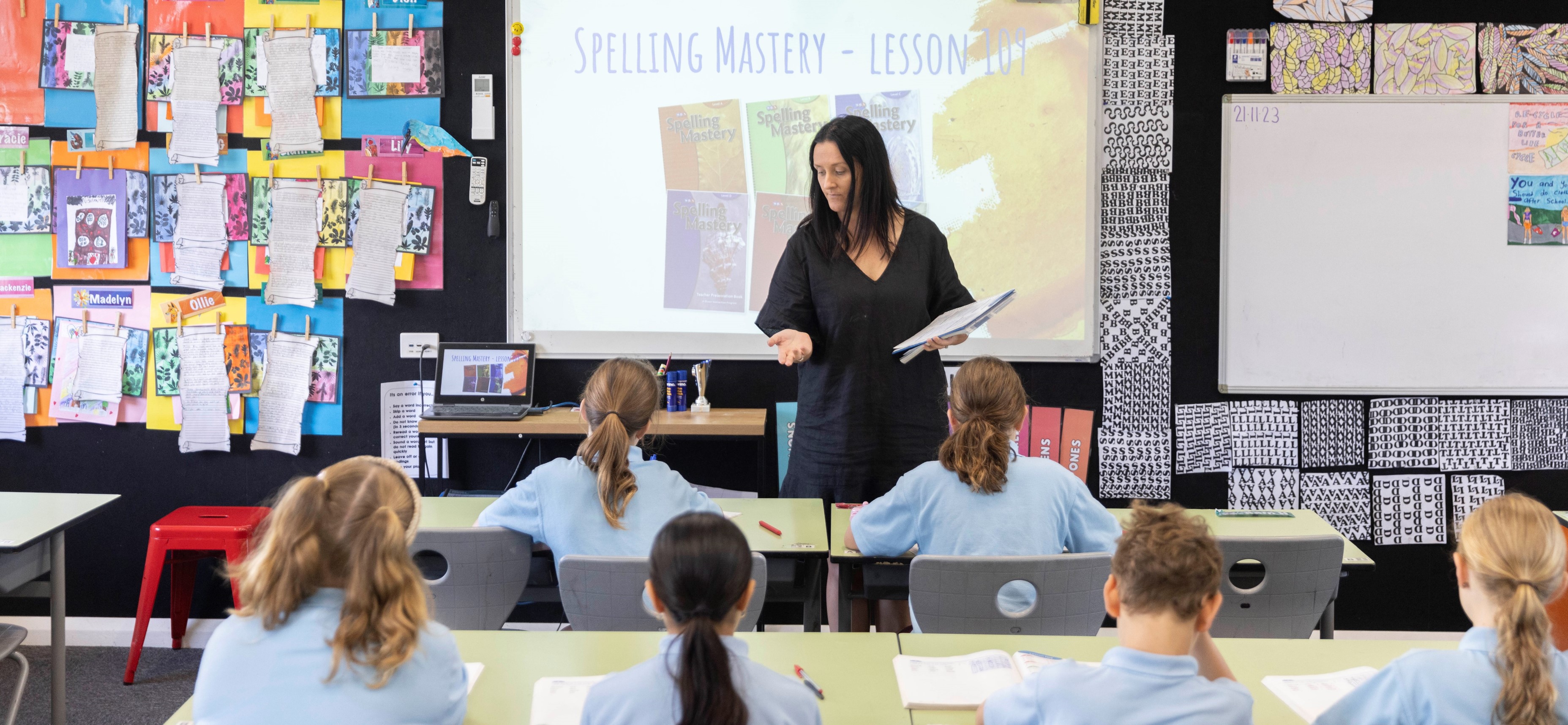In this interview School Partnerships Manager Megan Moore discusses Good to Great Schools Australia’s Oz-e-science curriculum which is now available for primary schools looking to implement an evidence-based approach to science education.
What is Oz-e-science?
Oz-e-science is a foundation to year six science curriculum particularly designed for Australian schools. Oz-e-science is unique because it combines an explicit instruction model with an Australian context and full coverage of the Australian Curriculum.
Who is Oz-e-science designed for?
Oz-e-science is designed for all Australian schools. It’s an effective, evidence-based approach that is flexible in its delivery because we have two approaches – a comprehensive course that allows for two hours of science instruction each week, and an essentials course with just one hour per week for schools that don’t have the time or mandate to do more.
It’s also designed for teachers, to give them confidence in teaching science. It comes with complete ‘ready-to-deliver’ lessons, and it is the complete toolbox that teachers need to effectively teach science and engage students.
What do teachers like about Oz-e-science?
Primary teachers are generalist teachers, so they are required to teach all of the key learning areas – science included. Each teacher has strengths in particular areas, and science is often one of those key learning areas where teachers don’t feel as confident. There might be a little bit of science anxiety because there are a lot of big concepts in science that many teachers themselves may not feel confident about explaining in simple enough terms for primary school students. When you get to the higher grades of primary school, teachers need to have a depth of knowledge to be able to clearly explain scientific concepts. So there are a lot of teachers who don’t feel confident about teaching science and they love Oz-e-science.
The benefit of Oz-e-science is that it provides all the background information that teachers need. But also because of the style of delivery in the teaching guides we provide, the teacher has all the knowledge and prompting they need to explicitly instruct in the content. All of that’s provided for them – there’s no need to do extra research or extensive lesson planning.
We capture regular feedback from teachers including one-on-one interviews with our curriculum developers, online surveys at the end of every unit and there’s even a page in the teaching guides where teachers can scribble their ideas and experiences during class and hand in to us later. We get really good intel from these touch points that help us improve the product but also identify where we are doing well, and one of those strong points is that students are very engaged, interested in the content and paying attention in class.
What is included in Oz-e-science?
Oz-e-science provides everything teachers need to teach science and engage students. It has great supporting resources for teachers. The teaching guide gives the teacher all the information they need to give an explicit instruction lesson. There’s a visual display and a multimedia presentation that is visually engaging for students, and gives a lot of the illustration of what we’re explaining. Then there’s the student workbook so that students can apply their knowledge and show their learning.
As well as the fantastic teaching guides, multimedia presentations and student workbooks, we’ve got great resources too. For example, to demonstrate the concept of science as a human endeavour, in each unit we look at a famous scientist who’s contributed to a particular field, for example a poster of David Attenborough demonstrates human endeavour in Biology and Albert Einstein is used for Physics. All the units come with classroom posters of the relevant famous scientists with a short biography and description of their contribution to science.
Some of the units have engaging activities like card games attached to them. For example, we have developed a card game for Year 5 Chemistry learning about the Periodic Table of Elements. The atomic bonding card game is a hands-on activity that involves getting up, moving around the classroom and comparing cards with other students to find a match. Each card shows an atom from the Periodic Table and how many electrons it has in its outer shell. In the lesson, students learn that all atoms try to have eight outer electrons to be stable. In the card game, students draw a random card, they then need to calculate how many more electrons their atom needs to have eight outer electrons. For example, if a student draws the Oxygen card, that has six electrons and they need an additional two electrons for Oxygen to be stable. The student walks around the classroom, comparing cards with the other students, until they find a student with an atom that has the number of electrons their own atom needs. For example, the student with Oxygen needs to find a student with an atom card that has two electrons. Once they find it, the two atoms (students) stay together, forming a molecular bond. That Oz-e-science unit comes with all the materials teachers need to facilitate the card game, including practical instructions in the teaching guide and the cards.
Each unit also has a ‘club’ focus and comes with a handbook for teachers on how to run clubs to engage students and their families in each area of science. For example, Star Club is part of the Earth and Space unit of Oz-e-science and it provides science learning opportunities for students and their parents. In Star Club there are opportunities to work together to prepare an exposition on a chosen star, to work independently doing desktop research and also to get parents involved. Star Club has an activity where a local expert is sought out who can bring in their experience and expertise to help convene an astronomy night where the whole family is invited. And that’s what clubs do, to try and connect with home and build that partnership between school and home, because conversations about science are important to have beyond school as well.
What is explicit instruction and how is it used in Oz-e-science?
All curricula developed by Good to Great Schools Australia are based on explicit instruction – a structured, systematic, and effective methodology for teaching academic skills. It is called explicit because it is an unambiguous and direct approach to teaching, which includes both instructional design and delivery procedures. Oz-e-science is the only Australian explicit instruction resource available for science teachers.
The explicit model says: let’s start with the right information, let’s be really clear on what the foundations and the platform of this learning is. And then once we’ve got that clear, we have the freedom to explore and inquire using all of the skills and the knowledge that we’ve already established. Using the ‘I do, we do, you do’ approach, science content is broken down into small steps that are modelled by the teacher, followed by guided practice and many opportunities for checking for understanding and feedback.
No, it’s not rote learning. The whole purpose of the explicit instruction model is to make sure that from the beginning students have the right information. Often in an inquiry approach to science, students bring their own thinking or understanding of the world and of scientific understanding, and it can be riddled with misconceptions. Sometimes you have to do so much untangling of all of that before you can get to the correct knowledge base. And I think if there’s one thing that I’d like teachers to hear about explicit instruction, it’s that it’s not all teacher talk and then student testing, it’s that progression from ‘I do’, to ‘we do’, to ‘you do’.
What is the evidence base for Oz-e-science?
Our teaching approach and curriculum is based on world research for the most effective teaching strategies to achieve the best student outcomes. It strikes an effective proportional balance between teacher-directed instruction and inquiry learning strategies that engage the natural curiosity of students and develop their love of science.
This is supported by McKinsey and Company, a leading international firm that advises governments around the world on strategic management of education systems. Their analysis of global 2015 PISA results found that students who receive a blend of teacher-directed and inquiry-based instruction achieve the best outcomes. The optimum balance is not 50-50 but preferences teacher-directed instruction whilst providing opportunities for inquiry learning. They identify the ‘sweet spot’ for optimum learning, where teacher-directed instruction is the main pedagogy used with a proportion of follow up lessons being inquiry-based. We aim for this ‘sweet spot’ when designing our curriculum.
Oz-e-science also responds to the 2018 work of John Hattie and Gregory Donohue, A model of learning where they describe three phases of learning – surface, deep, and transfer – and how different instructional strategies work better at different phases of learning. Oz-e-science incorporates the right balance between teacher-led instruction and inquiry, and aims to get the timing right when using particular strategies.
Why is Oz-e-science good for students?
Students will love Oz-e-science because it will help them learn science effectively. Oz-e-science gives them the confidence of knowing that they’re building knowledge. And they’re getting the facts upfront, an opportunity to properly understand what it is that they need to learn. But then there’s the fabulous inquiry, curiosity component, where they get to test and apply their learning in a supported environment. Kids love that.
What schools are taking up the program?
I’ve had the opportunity to show our Oz-e-science resources to a lot of schools, and without fail their eyes light up when they see it, because it’s a one-stop-shop for science. It’s the only resource they need to implement a Foundation to Year Six science program in their school, knowing that they’re using best practices to achieve great outcomes. They also love the visually engaging presentation and the rigour of the content, which is created by science experts. So regardless of whether they are city schools or remote schools, they all see the value as soon as they look at the resources.
If you or your school is interested in getting more information about Oz-e-science, get in touch with us today [UPDATE LINK] to arrange a free sample or a chat with Megan.



